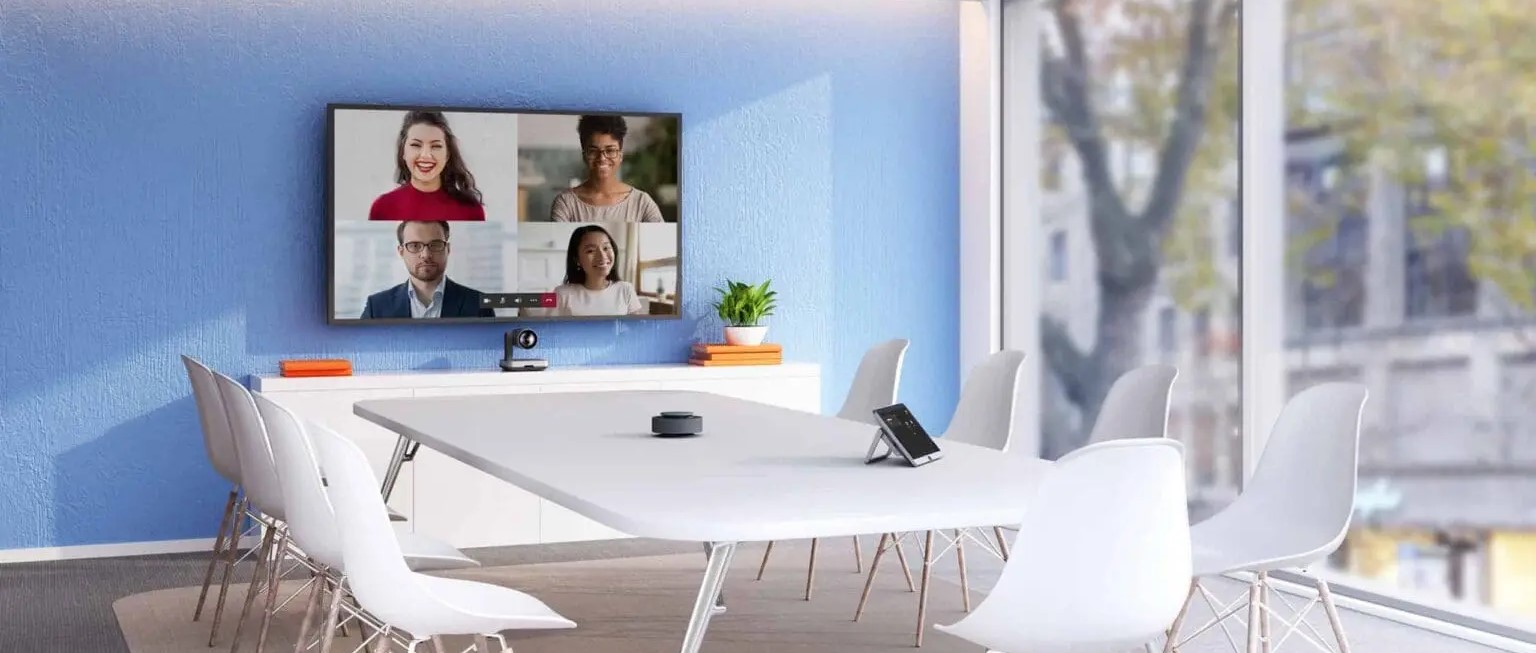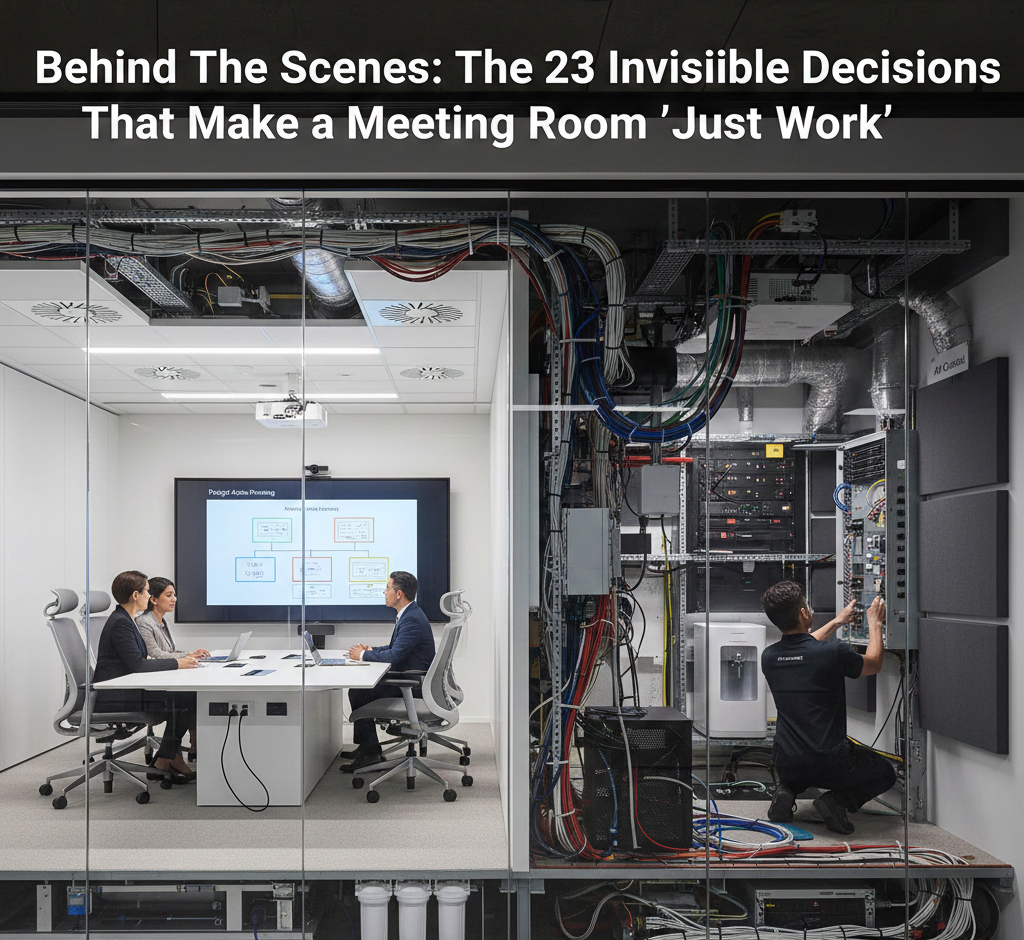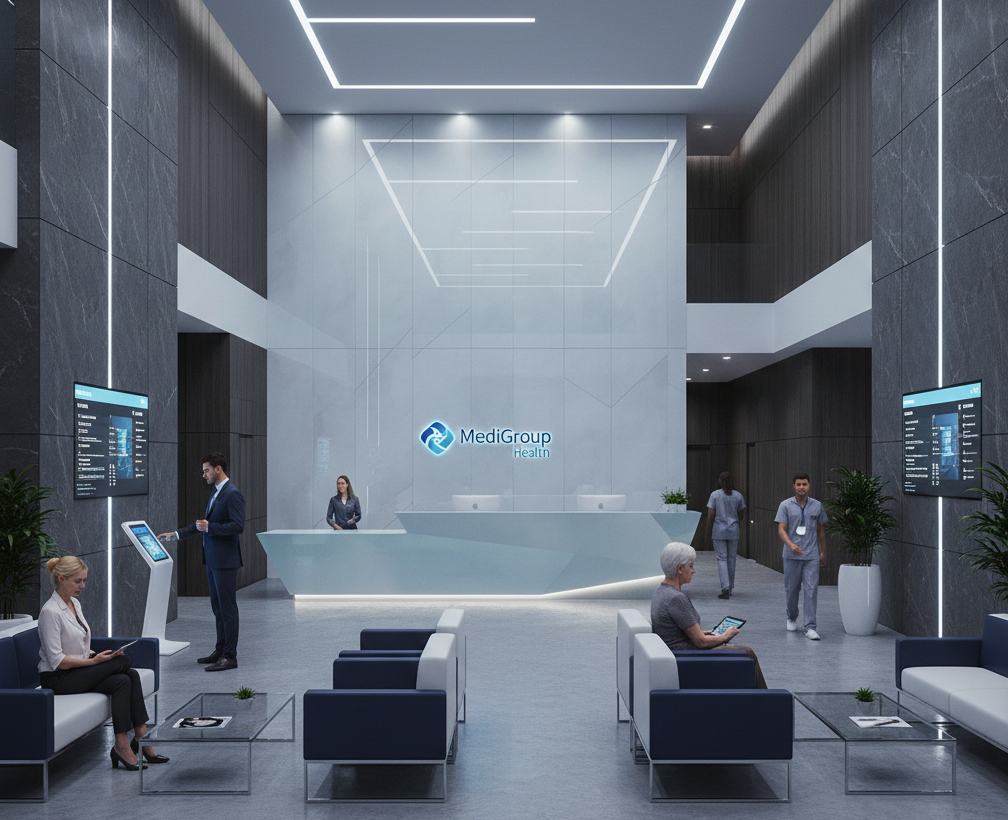The traditional fight during a meeting of fumbling with cords, handling an echoing sound, and watching a video freeze mid-conference. Does this situation strike close to home? These old meeting room problems are actually more than simply an inconvenience; they can somewhat impede our collaboration and productivity, particularly in our present hybrid work arrangement. And here is the catch: With a 16% annual growth from 2024 to 2030, the market for smarter meeting solutions is expected to soar to an incredible $4.9 billion.
The pandemic of COVID-19 has surely sped this trend and forced businesses to use video conferencing and cooperative technologies far more rapidly. As corporate cultures now adjust to hybrid rhythms, the demand for meeting room technology that is really connected, simple to use, and sturdy becomes more pressing than ever.
If your meeting rooms still cause friction, it’s time to ask: Is our infrastructure holding us back?
What Exactly is a “Smart” Meeting Room?
A “smart” meeting room is more than just a room with a projector. Instead, a smart meeting room is a complete ecosystem that is built for easy, productive, and inclusive meetings for all of its attendees – in person or remote.
Just think of it as a room that understands what you and your team need, automatically removing friction:
- One-touch start: Join meetings and share content instantly – no cables or IT help.
- Intuitive control: Manage AV, lighting, and displays from one simple interface.
- Active collaboration: Real-time digital whiteboarding and easy content sharing.
- Equal experience: Crystal-clear audio and intelligent video for all participants.
- Efficient management: Automated room booking and utilization tracking.
The urgency is unmistakable: A 2024 JLL Study found that 73% of organizations are actively rethinking their office spaces specifically to accommodate hybrid models. Furthermore, another report states employees spend an average of 37% of their time in meetings. When nearly 4 out of 10 working hours involve meeting rooms, ensuring those spaces are efficient and effective isn’t optional – it’s a requisite to organizational success.
Essential Smart Room Features
So, what technologies transform a standard room into a smart one? Here are the essential components:
- Simplified joining: Crestron Flex or Microsoft Teams Rooms for a one-touch start. AirServer for wireless BYOD sharing.
- Immersive AV: Intelligent cameras like Jabra PanaCast (180° view) and professional audio systems.
- Interactive collaboration: Large touchscreens (Microsoft Surface Hub 2S) or digital whiteboards (Samsung Flip).
- Unified control: One-stop control lets one interface—touch panel or smartphone app—manage HVAC, video sources, lights, blinds, and audio levels, therefore simplifying the user experience.
- Room scheduling: Digital signage outside rooms (PADS4 Digital Signage is great for this) shows real-time availability and reservations, so minimizing “room hunting” and conflicts.
- Cloud management: Cloud-based management systems like Surge+ let IT personnel remotely oversee, maintain, and update gadgets across several rooms and places, therefore assuring uptime and security.
Signs Your Meeting Tech is Failing You
How can you tell if your conference rooms have become a liability instead of an asset? Be on the lookout for these typical problems, which echo the complaints that Ivanti discovered in their “State of the Digital Employee Experience (DEX)” Study.
It reveals that a remarkable 49% of employees are actually frustrated with the technology/tools their organization has provided. And even more striking, 64% believe that the way they interact with that technology affects their morale, and an incredible 26% are actively considering quitting their jobs just because they do not have the appropriate tech at work!
- Chronic meeting delays: Like trying to plug things in, get the computer to play nice with the projector, or get the sound running, does every single meeting begin with a tech struggle? Those first 10 to 15 minutes certainly stack up!
- Mixed conference frustration: Do remote attendees complain about not seeing the whiteboard or continually request, “Can you repeat that?” Poor audio quality, bad video framing, and trouble sharing material cause an ‘us versus them’ dynamic.
- Dongle dependency & cable chaos: Your system is obsolete and impeding simplicity of use and spontaneity if users seek the appropriate cable beneath the table or require particular adaptors.
- Unused or avoided rooms: Note how some conference rooms are continually crowded, whereas others are always ghost towns. Chances are, the empty ones have a reputation for being difficult to use, with tech that’s either erratic or a pain to understand.
- IT support overload: Are helpdesk tickets for meeting room issues a significant portion of your IT team’s workload? Constant troubleshooting drains resources.
- Inconsistent experiences: Does the technology seem to act differently from one room to the next? It’s like you’re learning a new system every time you go to a different place. Wouldn’t that be somewhat irritating? It not only distorts your mood but also slows you down and causes you to question the overall configuration.
- Security concerns: Utilizing outdated software, not updating crucial firmware bits, or depending on those questionable wireless devices for presentations begs questions. It’s like leaving the door to your digital house wide open for troublemakers. Not okay.
- Lack of analytics: Do you not know how many individuals actually use the meeting areas and when the equipment usually crashes? Regarding improving the place and making it more effective, you are simply throwing darts at the board without that information.
If several of these signs resonate, your current infrastructure is actively impeding productivity, collaboration, and employee satisfaction. It’s time to plan an upgrade.
Strategic Planning: How to Upgrade Your Meeting Rooms
Upgrading to smart meeting rooms shouldn’t be a haphazard purchase of gadgets. It requires a strategic approach:
- Assess Needs & Pain Points
- Take stock of your current setup: Have a good look at the gear you’ve got now, the sizes and layouts of the rooms, and any issues people usually face (ask around for their feedback!).
- Define user personas: Know the requirements of several teams—executives, sales, engineers—to define user personas.
- Establish specific aims: What is the main purpose here? Is it to facilitate room booking, assist remote workers to feel more connected, or speed up meetings?
- Define Budget & Scope
- This isn’t just about splurging on new laptops or speakers; it’s about making the team more productive, so think of it as an investment.
- Decide scope: Go all in with a complete renovation, or take it slow with a phased plan? Maybe start small with the busiest or most important rooms.
- Choose the Right Technology Stack
- Platform first: Decide on your main collaboration platform (e.g., Microsoft Teams Rooms first). This motivates fundamental hardware decisions.
- Choose integrated systems that function perfectly together:
- Video conferencing: Crestron Flex systems provide reliable and approved options for video calls on platforms like Teams and Zoom.
- Displays: For displaying things, go for big touchscreens like the Microsoft Surface Hub 2S for brainstorming sessions, and regular monitors for straightforward content sharing.
- Audio/Video: Don’t forget about the sound and video gear either, like the clever Jabra PanaCast camera that frames everyone perfectly and solid mics and speakers for those crisp conference calls.
- Control: And to control it all, a user-friendly central hub, like Crestron’s touch panels, will keep things running smoothly.
- Scheduling & signage: PADS4 Digital Signage for dynamic room panels.
- Wireless sharing: AirServer for seamless BYOD screen mirroring.
- Management: Surge+ for remote monitoring and management.
- Partner with an Experienced Integrator: Look for a partner like Resurgent AV Solutions with:
- Great knowledge of the integration of audio-visual systems design and implementation.
- Key manufacturers (Microsoft, Crestron, etc.) certifications.
- Demonstrated experience in your field and with comparable initiatives.
- Excellent support and project management abilities.
- Ability to grasp your specific needs and transform them into a consistent solution.
- Design, Deploy & Test
- Work with your integrator on detailed room designs and system schematics.
- Make sure you properly install, calibrate, and test before delivery.
- Check for seamless integration with existing IT infrastructure (network, security).
- User Training & Adoption
- Don’t skip this! Even the best tech fails if users don’t know how to use it. Provide clear, concise training (videos, quick guides, in-person demos).
- Promote the benefits and ease of use to drive adoption.
- Ongoing Management & Optimization:
- Utilize management platforms (Surge+) for proactive monitoring, updates, and troubleshooting.
- Gather user feedback continuously.
- Analyze utilization data to optimize room configurations and future investments.
Conclusion
With hybrid work entrenched and meetings time-consuming over a third of the workweek, efficient meeting rooms are non-negotiable. Outdated tech drains productivity and morale. If you recognize the warning signs, the right time to upgrade is now.
Transform your meeting rooms with Resurgent AV Solutions. We design and deploy seamless smart meeting experiences using cutting-edge technology like Microsoft Teams Rooms, Crestron Flex, Microsoft Surface Hub 2S, Samsung Flip, Jabra PanaCast, PADS4 Digital Signage, AirServer, and Surge+. Our solutions connect teams effortlessly across locations.
Stop letting bad AV hold back your collaboration. Contact Resurgent today for a consultation!
FAQs
1. Is outdated meeting tech dragging us down?
Absolutely! Dealing with tangled cords, poor sound, and screen freezes isn’t just irritating; it actually hinders teamwork and efficiency, especially in hybrid setups.
2. What makes a meeting room “smart?”
A smart room offers one-touch starts, intuitive controls, and clear audio/video for all participants, creating a seamless meeting experience.
3. How can I learn more about upgrading my meeting rooms?
If you are tired of all the tech problems and lost time in your meetings, it’s time for an upgrade. Contact Resurgent for a chat about upgrading your spaces today!



